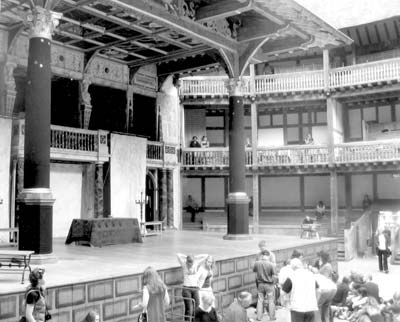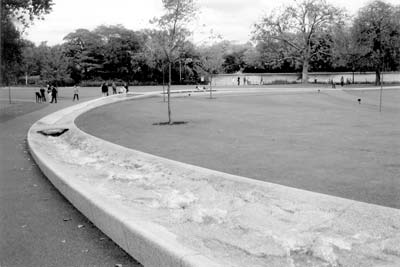Dealing with glitches in London
Crowds everywhere. Queues everywhere. And glitches galore. Has London always been like this? Has travel always been like this?
My husband, Jim, and I have taken more than a dozen trips to London, the latest one Sept. 19-Oct. 3, 2006. Our nonstop flight on British Air from Phoenix to Heathrow was completely full (350 passengers) and, in spite of arriving 2½ hours before flight time, it took us nearly an hour to check in. Our flight was nearly an hour late leaving, as well.
On arrival in London, we bought round-trip tickets (£27 each, or about $51) for the excellent Heathrow-Paddington train (www. heathrowexpress.com). It took less than 20 minutes to get into the city from Terminal 4.
We purchased one-week Oyster Cards for the tube; they only have to be swiped at tube turnstiles or bus entrances — very handy. (A one-week card for London’s “Zone 1” costs £16.50 [$32]; for an explanation of “Zones,” see the Transport for London website, www. tfl.gov.uk/tfl.)
Before we left home, Jim did some research and discovered that our MasterCard adds three percent to each charge for converting pounds to dollars, while our credit union adds only one percent if we use our debit card. Needless to say, we used our credit union debit card for nearly every purchase.
We also have a Costco American Express card which charges two percent to convert from pounds to dollars but gives us a rebate, particularly on travel and restaurant charges.
Because we are theater buffs, several weeks before we left for London we ordered theater and opera tickets online. This worked beautifully, and the service charges were nominal. We had excellent seats, usually in the stalls. We figured the average cost for a superb theatrical experience (all eight productions we attended were excellent) was £27 per person. For “La Traviata” at the English National Opera, Upper Circle seats cost £55 ($103) each.
We had our first dinner of the trip at Taormina (19 Craven Place, W2 3QH; phone 0871 0753908), a neighborhood Italian restaurant just a couple of blocks from our hotel. We each had a starter and a pasta entrée and shared a half bottle of Frascati — all very tasty. The bill was £37.55, or about $71. Crikey! Two years ago we dined at the same place, had a very similar dinner and the price was £31, which was then worth $54. Prices have risen a bit, but the dollar value has dropped alarmingly.
We stayed at the Columbia Hotel (95/99 Lancaster Gate, London W2; phone +44 [0] 20 7402 0021, fax +44 [0] 20 7706 4691 or visit www.columbiahotel.co.uk). It was okay, and for London the price was right: £82 ($154) a night for a twin room, including all taxes and a large breakfast.
But there was a glitch. A water line broke under Bayswater Road less than a block from our hotel, closing that road to all traffic. This meant bus service along Bayswater was rerouted, so the red double-decker we had planned to ride into Piccadilly no longer stopped a half block from our hotel and, indeed, seldom went to Piccadilly! We had to walk blocks to the temporary bus stop, and then the bus went only as far as Oxford Circus. That put an end to our bus riding.
By the way, Bayswater Road was still closed when we left London 12 days later. However, when the Lancaster Gate underground stop is open and Bayswater Road is open to traffic, the Columbia is a pretty good location.
Another glitch — the Queensway tube stop was closed on both Saturdays and Sundays, requiring an additional three blocks’ walk to the Bayswater underground stop. These walks may not seem like much to the average traveler, but we are both in our seventies, with fairly advanced arthritis. The many stairs and long walks involved in using the underground were tiring and often painful.
Our usual plan each day was to visit a museum or some other attraction in the morning, return to the hotel for a nap, then go to dinner and the theater in the early evening. This meant two round trips and usually at least two changes of subway trains every day. In addition, the weather was very warm for September, and the subway trains were stifling. Getting around London was exhausting!
Taxis were expensive as well. The fare from Lancaster Gate to the West End theaters, including tip, was £17 ($32).
On the evening we went to the opera, we decided to have a light supper in the excellent restaurant on the top floor of the National Portrait Gallery. Alas, another glitch! The restaurant closed at 6 p.m., which wasn’t the case the last time we were in London.
A highlight of our visit was a tour of Buckingham Palace. (For tickets, contact The Official Residences of The Queen, London SW1A 1AA, U.K.; phone +44 [0] 20 7766 7300, www.royal collection. org.uk). It is open to the public during the months the Royal Family is in Scotland. Again, we had ordered tickets online; two senior tickets cost £46.50 ($87). We thoroughly enjoyed seeing about 15 of the palace’s public rooms and a portion of the Queen’s vast art collection in the Picture Gallery.
We had toured the Cabinet War Rooms on a previous trip, but now a Churchill Museum has been added — very well done. We could have spent a whole day in the Churchill Museum alone. Admission for us was £8.50 ($16) per person, and it was well worth it! Westminster is the nearest tube stop. (Contact Churchill Museum and Cabinet War Rooms, Clive Steps, King Charles St., London SW1A 2AQ, U.K.; phone +44 [0] 20 7930 6961, fax 7839 5897 or visit http://cwr. iwm.org.uk).
To see the exhibit of Salvador Dalí’s works at the County Hall Gallery (Dalí Universe, County Hall Gallery, Riverside Building, County Hall, London SE1 7PB, U.K.; phone 0870 744 7485, www.daliuniverse.com), we took the subway to Westminster stop and walked across the bridge to County Hall. Indeed, there was an extensive collection of Dalí’s sketches, drawings, paintings and sculpture as well as designs for the movie “Spellbound.” We paid a senior rate of £10 ($19) each.
Our plan was to continue into the well-known Saatchi Gallery, which has been housed in this old building since 2003. Whoops! Glitch again! The Saatchi Gallery was in the process of being moved to Chelsea.
On our last day in London we decided to return to the Theatre Museum in Covent Garden, since there were exhibits we hadn’t yet seen. Of course, the museum is closed on Mondays. Glitch!
Instead, we crossed the street to the Drury Lane Theatre, where we had a tour of one of the oldest still-operating theaters in the world. Our guide was a charming young actor who had a million stories to tell, and the tour was delightful — worth every penny of the £7 ($13) per person.
All in all, the two weeks we spent in London were full of experiences that some might call “adventures.” We certainly dined better than on previous visits, and we enjoyed the theater and museums thoroughly. Our hotel was across the street from Kensington Gardens and we liked to sit on a bench, watching people and their dogs. The Princess Diana Memorial is really stunning.
Even though we did a lot of research before our departure, we probably could have been more efficient with our time. If our hotel had been closer to the West End theater district we could have saved ourselves a lot of walking, but hotels in that area are prohibitively priced. Getting to Shakespeare’s Globe Theatre and the National Theatre (both on the South Bank) is not easy unless one takes a taxi.
We adore the city’s museums but found that by the time we got to the National Gallery or the Tate Britain via public transportation, we were too tired to enjoy the art! We know the city pretty well after more than a dozen visits, but even with a lot of planning we found ourselves doing a great deal of walking.
Maybe there is a reason why we saw so few elderly people riding the subway or walking along the streets: maybe we’re just too old for London!
CAROLYN YEATER
Tempe, AZ


